
You have probably noticed that there will be a link on the home page of many websites that is labeled “Sitemap,” as can be seen in the lower right corner of the screen shot. The sitemap is an overview of the structural linkage of a website. While some people used to consider sitemaps as unnecessary to building a website, today having a sitemap is very important for any website. Your sitemap should be placed on your website’s home page. The home page often has the highest PageRank, so by putting the sitemap there, you’ll ensure that your pages get indexed as quickly as possible.

Search engine optimization of your site should be approached from a number of different directions. Sometimes sitemaps are an underestimated tool in your SEO toolbag, but they make things easier on both visitors and search engine robots trying to index your site. When you use your robots.txt file to tell a search engine what pages of your website to exclude when indexing it. The sitemap does the opposite. It tells the search engines where you want them to go.
Sitemaps have been around for awhile. They’ve been part of good web design for years, but now they are even more important due to the adoption of sitemaps by the web-crawling search bots. You should know that while Yahoo! still uses sitemaps in standard html format, Google sitemap uses an XML format that differs from the html sitemap that human visitors use. If you’re worried that having two sitemaps (one in html and one in XML) will be regarded as duplicate content, stop worrying. Google has stated outright that using a sitemap won’t lead to your site being penalized.
SEO is one reason to have a sitemap, and we’ll explore the reasons further in the next section. Other reasons to have a sitemap are for easier navigation within your site, emphasis of the theme of your site, and as “proof” of organization and relevance.
We’ve already talked about sitemaps as a tool in any multifaceted approach to SEO because they can be so helpful to the search engine web crawling robots. Here is how that works. Your sitemap is a page containing links to every page on your site. If a search engine robot hits this page, it will follow every link listed on the sitemap. That means that every page of your site is indexed by search engines. That’s also why a link to your sitemap should show up prominently on the front page of your website. And if your site undergoes changes, sitemaps inform the search engines that they have taken place. The result is that the changes will be indexed faster than if you don’t have a sitemap.
Navigation of your site will be much easier with a sitemap. Have you ever gone to a site and wondered how to find a page without having to poke around endlessly to find it? It’s a great relief to find a sitemap and find a link to exactly the page you were looking for. If you have a very large site, you need to make sure that your visitors can find their way around and back. It’s no fun to find yourself deep within the “shop” section and wanting to get to the “blog” section and not seeing an obvious way to get there. But knowing you can scroll down to the bottom of the page no matter where you are and finding a link to the sitemap makes things infinitely easier.
Sitemaps make it much easier to figure out a website’s theme. Suppose you were searching the web for sites about a certain politician, Mr. X. If you find a site that’s all about Mr. X, you can scroll down to the website and see links to pages within the site on “Great Accomplishments,” “Bio,” and other similar pages. That helps you if you’re a fan of Mr. X, but it also helps you if you can’t stand Mr. X, because you know right away if you want to find another site or stick with the one you are on. Your sitemap gives you the “snapshot” of your site’s theme, so that visitors don’t have to plow through page after page to figure out what your site is all about.
Visitors and search bots aren’t the only ones that sitemaps help. For example, a sitemap lets you, the webmaster have a view of your site’s makeup, and when you add new pages or sections, you can take into account the existing structure just by looking at the sitemap. That way you’ll have a well-organized site, with all the sections sorted out based on relevance.
One advantage of having a sitemap that you submit to the search engines is that you won’t have to rely so much on external links directing the search engines to your website. Sitemaps can also help in the event that you have broken internal links or “orphan” pages that can’t be reached another way. Of course you should fix these problems, but your sitemap can help out temporarily.
For new sites, or sites with lots of new or recently updated pages, using a sitemap can help a lot. Sure, you can go without a sitemap, but they are becoming more standard in terms of submitting websites to search engines. The bots, of course, will continue to index the web, and sitemaps won’t make that procedure go away, but having a sitemap is, if anything, becoming more important to getting your website seen and recognized.
Before you hire an SEO (search engine optimization) company or consultant, or a PPC (pay-per-click) company, you should be thoroughly familiar with what they do.
Hiring an SEO company can potentially raise your site’s profile dramatically in a short time, but if they go about it in the wrong way, you risk damaging your site’s standing in the search engines and your business’s reputation. The general things that SEO companies do include:
Perhaps the best time to hire an SEO company is when you’re launching a new site or redesigning an existing site. When you interview SEO companies that you might consider hiring, ask the following questions:
When choosing a site, make sure you understand exactly where the money is going. There are search engines out there that combine paid results with organic results and some SEOs may promise to get you highly ranked in search engines by placing you in the ad section. These companies are not helpful. Who’s to say they don’t create their own “search engine” that they can easily game or control? You care about the big search engines: Google, Yahoo, Bing, etc.
Some SEO companies will create shadow domains that shunt users to a site deceptively. Suppose you complain about their service. They could easily point your domain to a different site or a competitor’s site. Another bad practice to watch out for is creation of doorway pages stuffed full of keywords on the client’s site, claiming they will make the site “more relevant.” Number one, that’s bull, and two, these doorway pages may well contain links to the SEO’s other clients, diluting the popularity of your site and possible rerouting it to illegal or “bad neighborhood” (“adult”) sites.
Run away from SEOs that own shadow domains, that don’t differentiate between organic search results and paid ads on the results pages, who operate with multiple aliases, or who get traffic from fake search engines.
A great place to start when thinking about hiring an SEO company is Google’s Webmaster Central page where you can download a free SEO starter guide (see screen shot). If you’re going to hire an SEO consultant, you should know what they’re supposed to be doing so you can protect yourself from shady practices.
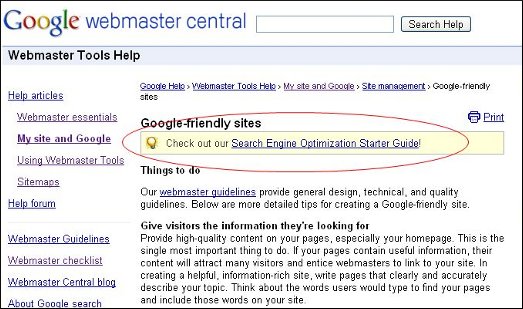
When you choose a PPC company, make sure it doesn’t work for your competitors too. In fact, you should get a guarantee from them that they will not communicate with your competitors when your PPC campaign is in the planning and execution stages. If your PPC company uses unfair means like cloaking to get you a higher rank, fire them at once. They could easily get you penalized or banned by publishers. You should find out what their track record is with top search engines. If their successes come from third-tier engines, look elsewhere for a PPC company. And you should definitely demand references and check up on them.
The reason people hire PPC firms is to give an e-business instant exposure and funnel heavy web traffic to its site. One service provided by PPC advertising firms is landing page optimization. They should also use the marketing techniques that have been proven to increase search engine ranking by honest and acceptable methods. They should increase traffic and conversion rates, and analyze on-site activity as well.
Your PPC company should have a great track record running campaigns on big PPC advertisers like Yahoo and Google. the best PPC companies have a stable of professional PPC experts trained on the most effective SEO techniques so that they can run effective programs for their clients. Their SEO techniques and content should be above reproach. Some PPC companies also offer to redesign sites for SEO, and it is a matter of choice as to whether you want your SEO and PPC coming from the same source. If you do, check and double check references to make sure you’re getting an above-board company.
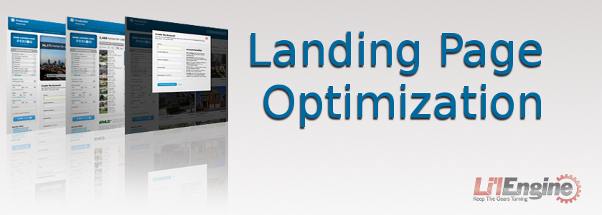
A landing page is the page that comes up when a potential customer clicks on an advertisement or on a search engine result. The landing page displays content that naturally follows that of the advertisement or the link. It is organized around a few keywords or phrases for search engine indexing purposes. In a pay per (PPC) click campaign the landing is customize to measure how effective different advertisements are so that customers can be more accurately targeted in the future.
Landing page optimization, or LPO is a part of the overall marketing process called conversion rate optimization. The goal of conversion rate optimization is to improve the percentage of visitors that become actual customers and sales leads. There are a number of ways of approaching LPO, some based on targeting, and others based on experimentation:
Open-ended experimentation shows consumers several variations of a landing page and their behavior is then observed. With open-ended experimentation, the landing page is changed dynamically as the results of the experiment change.
Closed-ended experimentation involves the same process as open-ended experimentation, except the consumers’ behavior is monitored. When the experiment is over, an optimal landing page is chosen based on the consumers’ behavior and preferences.
Consumer directed targeting is sometimes known as social targeting. Page content is created based on publicly available information based upon ratings, referrals, reviews, and tagging.
Predictive content targeting is a type of targeting where the page content is changed based on correlating known information about the potential customer (prior purchases and demographics, as examples) in order to anticipate future actions based on predictive analytics.
Associative content targeting is also known as rule-based optimization, or passive targeting. Page content with associative content targeting is modified base upon information gleaned from the visitors search criteria, geographic location, source traffic, or ther generic factors that can be used for non-research-based segmentation of the consumer market.
LPO testing actually goes far beyond this, but it is clear that webmasters put a lot of time and effort into getting their landing page right. While the specifics of a landing page will change based on the industry and the product being offered, there are a few general tips that everyone should keep in mind when it comes to optimizing their site’s landing page.
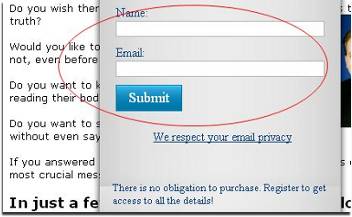 1. Get the registration form right. First of all, know what kind of registration form works best with your particular landing page clientele. The conventional wisdom is that you lose up to one-third of your respondents for each registration field. Whether this is true or not, it is certain that seeing a lot of registration fields is a turn-off to most people, so be sure you’re actually using whatever information you plan to squeeze out of your respondents. Some webmasters think that just getting the email address is best to maximize the number of possible leads, while others think that it’s good to gather a few basic fields of data – enough to be able to separate your A leads from B leads, for example.
1. Get the registration form right. First of all, know what kind of registration form works best with your particular landing page clientele. The conventional wisdom is that you lose up to one-third of your respondents for each registration field. Whether this is true or not, it is certain that seeing a lot of registration fields is a turn-off to most people, so be sure you’re actually using whatever information you plan to squeeze out of your respondents. Some webmasters think that just getting the email address is best to maximize the number of possible leads, while others think that it’s good to gather a few basic fields of data – enough to be able to separate your A leads from B leads, for example.
Put yourself in your landing page user’s shoes. What would he or she think would be sufficient information for you to have from them? Maybe their job title, company, phone number, and potential time frame of purchase would be appropriate, but go much beyond this, and people won’t bother at all. In the first screen shot you can see an example of a very simple registration. While it does appear as a “separate” page covering part of the real landing page, it is simple and it doesn’t float around, following me as I scroll down the page, so it’s pretty reasonable.
2. Don’t overdo the special effects and “wow” graphics of your landing page. Some landing pages make you feel like you’ve landed in the midst of a circus. People don’t have a lot of patience, so it’s better to keep it focused and simple. If your landing page contains a lot of text – and most do – then at least break it up with plenty of subheadings, bullet points and white space. And while you’re at it, offer numerous calls to action. Some people like to click on a call to action button at the top of the page, some will be convinced part of the way through, and others will read through to the last word before responding. Cater to all these people by sprinkling call to action buttons intermittently throughout your landing page. If you’re able, custom tag each link so you can see which ones are used the most. This will help you when it’s time to update your landing page.
3. Make it clear that the customer is in the right place. All it takes is a statement at the top welcoming new subscribers. Users take a little bit of a leap of faith when they click on an ad. It’s nice to know you’ve landed on an actual landing page rather than gone down some virus-laden internet rabbit hole. This leads naturally to the next tip.
4. Don’t do stuff that makes them think their computer has been taken over. Sure, special effects might wow gamers, but a landing page for an e-book on fly-tying doesn’t need the latest special effects. If a landing page is too whiz-bang, visitors may be frustrated close the browser and they’ll never come back.
 5. Don’t make it too easy for users to escape, however. You may think it’s nice to offer visitors buttons to click for extra information, or to make your landing page fit in better with your other pages (see second screen shot). While it’s OK for your landing page to have some similarities to the rest of your site, you should keep it focused. Your landing page should stand alone, and it’s sole job should be to funnel your visitors to the call to action. The one exception to this should be to offer a link to your privacy policy, but you should put your call to action button there as well.
5. Don’t make it too easy for users to escape, however. You may think it’s nice to offer visitors buttons to click for extra information, or to make your landing page fit in better with your other pages (see second screen shot). While it’s OK for your landing page to have some similarities to the rest of your site, you should keep it focused. Your landing page should stand alone, and it’s sole job should be to funnel your visitors to the call to action. The one exception to this should be to offer a link to your privacy policy, but you should put your call to action button there as well.
![]()
Education specialists will tell you that some of us learn more readily from reading, some from hearing, some from video, and some from doing. It only makes sense that when you conduct an internet search, you avail yourself of all the options when it comes to the information out there on the subject you’re interested in. That’s one reason why multimedia searching is a good idea.
Another reason is that sometimes the best information is something other than a written web page. For example, if you were to find a web page describing a newly discovered piece of music by one of the great composers of the past, the description would no doubt be interesting, but you could really appreciate it better if someone had posted a recording of someone playing the composition.
Likewise with video. While it can be thrilling to read a news story about a very close speed skating finish at the Olympics, you can experience it better if you watch a video of it.
When it comes to using multimedia to improve your search engine rankings, there are a number of ways to do it. You can post your own video content, or you can embed relevant video onto your page.
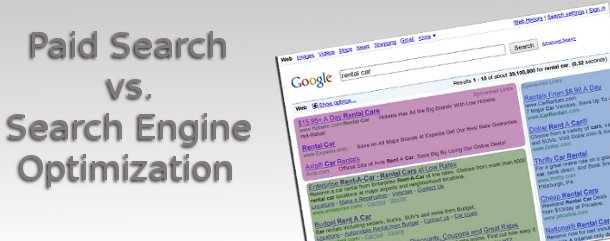
2004 Google Chief Engineer Craig Neville-Manning insisted that Google maintained a strict separation between the search index part of Google and the paid advertising part. Sometimes this separation was referred to as a “Chinese Wall” between organic search engine results and paid search engine results, but this terminology fell out of favor once Google started trying to gain suction in the harshly competitive market in China, and the recent Google in China drama has definitely kept the term buried, but that’s another whole story.
The question is, does Google still live up to this separation between paid and organic results? They insist that Adwords is totally separated from organic search engine placement, that the two are in parallel channels and as such will never meet. What exactly does this mean in practice?

Ideally, building up great text links should be a long term process. You may have heard the joke about the American tourist in England asking how they get their lawns so beautiful. The Englishman answers, “It’s quite a straightforward process. Just plant it, cut it, roll it, and water it for 400 years.” Links tended to in a long term fashion will turn out to be valuable, but most webmasters don’t have the web equivalent of 400 years (which is probably about two years) to cultivate all those links.
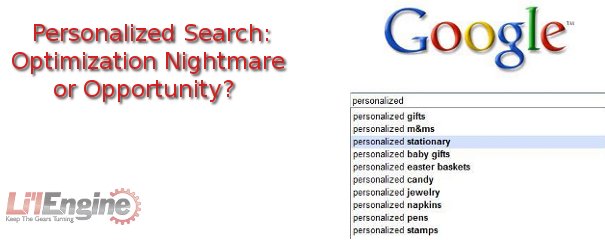
In December 2009 Google rolled out Personalized Search for users who were not signed in, and in over 40 languages. Personalized search has been around for awhile for signed in users who have web history enabled. This allows Google to fine-tune your search results based on past searches and on the sites you’ve clicked on in the past. This is how Google tries to optimize searches for you when your search terms have more than one meaning.
For example, Googling the term “blackberry” while signed in with web history on gets the results you see on the first screen shot. From my search history it is clear that I’m much more likely to be searching for information about the BlackBerry PDA than about the actual fruit. On the other hand, my mom, who does a lot of baking and jam-making, would probably end up with search results about the fruit rather than about the electronic device, based on her history of looking up recipes.
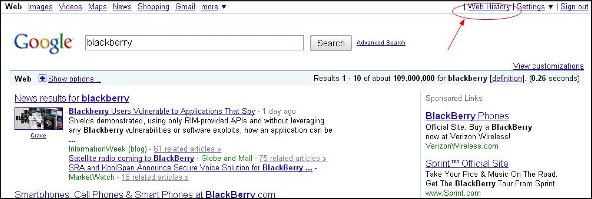
So now that personalized search is on offer for signed out users, exactly what does that mean?
It means that personalized search can use an anonymous cookie on your browser to base your search results on 180 days of search activity linked to this cookie. This is completely separate and apart from your Web History and your Google account. When you have the option of personalized results while signed out, you will see a link that says View Customizations in the top right corner of the results page, as you can see in the second screen shot. When you click on it, you can see how the results are customized and, if you want, you can turn off this type of customization, as you can see in the third screen shot.
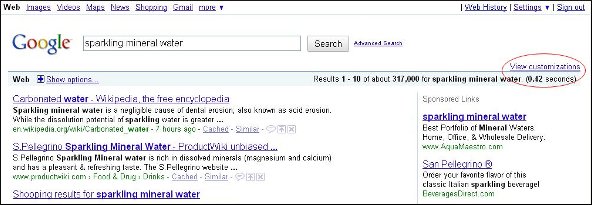
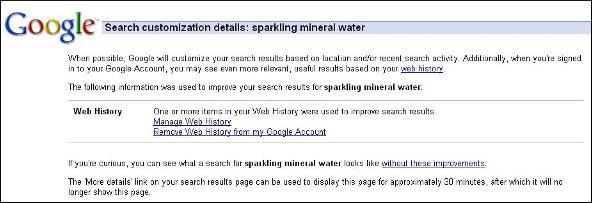
Now, there are obviously computers where lots of different people search, so the browser cookie might be influenced by multiple people’s search activity. To protect the privacy of the non-signed-in users, you can’t actually view the specific search activity upon which the signed-out personalized search is based. Plus, you can turn off personalized search settings for signed-out personalized search altogether if you want.
As for signed-in personalized search, you can clear the history upon which your personalized results are based at any time to protect your privacy. That way, if you stay signed in and someone else wants to know what you’ve been searching on, they won’t be able to do it through your personalized search history. Of course they could still go through your web history, so if you’re concerned, you should use your browser to clear your web history.
If you’re a webmaster, you might be wondering whether personalized search, adopted on a massive scale, will affect your ability to reach the people you want to visit your website. The answer, unsatisfactory as it may be, is “Yes, and no.”
Consider this. If a user searches for, say, “pith helmets,” and visits the top result and the last two results on the first page of listings. Then those three websites will be added into the person’s personalized search data. Next time the user decides to do a search for “pith helmets” then those two sites from the bottom of the first page of results will rank higher than they would in an organic, starting from scratch search.
But what if the user finds another search result, say the 7th one on the new results page, and bookmarks it and goes there henceforth rather than searching for pith helmets anymore for the time being. But then, a few months later, he thinks that maybe there’s a better pith helmet out there so he does another search. But this time, the one he bookmarked shows up as the top result. What gives?
Even though that site didn’t do any special SEO, there it is, right at the top of our pith helmet-loving searcher. However, other searchers will find other pith helmet dealers at the top of their results pages.
So how do you, the webmaster, change your SEO strategy? Or do you need to change it? If you’re doing legitimate, white-hat ways of getting traffic to your site, then your site will be more likely to bubble to the top of the research results for personalized search. A first time searcher might find your site perched at No. 1 simply because he has already visited it a bunch of times through other routes. This is true even if your site wouldn’t be tops in an organic search.
There’s nothing really that you should change in terms of your SEO strategy. Keep doing the on-site SEO as you have been, and you’ll probably do fine. But there’s nothing wrong with using off-site SEO to build up your brand and keep your visitors happy. Again, it boils down to having great content that people will find compelling and that will make them want to come back. This helps you whether the game is organic search or personalized search.
The takeaway is this: Google personalized search isn’t so much revolutionary as evolutionary. It’s not going to take all the search engine results and shuffle them massively. It may mean that sites that focus on the mechanics of SEO without focusing on great content could lose some ranking, but even that seems unlikely. Personalized search will change things up a little on an individual basis, but it by no means throws out the concept of organic search results based on SEO.
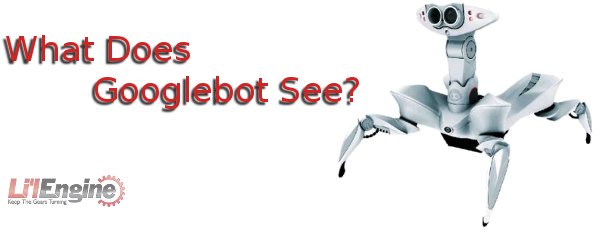
Something that can be very helpful when you are designing and refining your website is knowing what it “looks like” to the bots that crawl the web and index your pages. If your site doesn’t have the information that the bots need to know what your content and graphics are all about, then they can’t do a very good job indexing your pages.
If you use Firefox, you can download and install the “User Agent Switcher” option for Firefox. You’ll have to restart Firefox once you’ve installed it. Once you have it, in Firefox, go to Tools, then User Agent Switcher, then Options, then Options again. In the User Agent Switcher window that comes up, select User Agents and click on “Add.”
In the Description box, type something like “Google Bot” and in the User Agent box, paste this:
Mozilla/5.0 (compatible; Googlebot/2.1; +http://www.google.com/bot.html)
In the App Name box type Googlebot, then click OK. Now, any time you want to view one of your pages as if you were the Google bot, you go to Tools, User Agent Switcher, Googlebot.
You might have to block cookies to view some sites, and you can do this in Tools, Options, Privacy, Exceptions (then add the URL).
Another thing you can do is to use a text browser like Lynx to get a rough estimate as to how your site looks to Google. Google Webmaster Tools, however, has a feature that can help too. On the Webmaster Tools dashboard, click on the “+” sign by the “Labs” link in the left hand column. When you do, you’ll see an option called “Fetch as Googlebot” as you can see in the first screen shot. Click on it, and it will download your site (or whatever URL you enter) as the Googlebot sees it.

As in the second screen shot, you’ll see the html source just like that you’ll see when you click on “View Source” in your browser. You’ll get a response code, like 200, which means everything is peachy, or 301, which means “permanent redirect.” You’ll see what kind of server your website is on and any CSS files or scripts that are called upon and included.
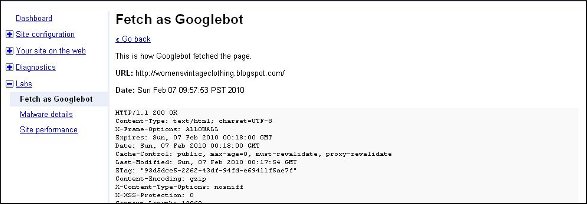
One caveat, however is that it doesn’t always work with PDF files, but Google insists it’s working on fixing the problem and if your sites look OK in your browser, chances are it looks OK to the Googlebot (even if it’s PDF).
If you run a lot of scripts or have lots of layers on your sites, this can be particularly handy. If your site is mostly simple html, your normal web browser will give you a pretty good idea of what Google sees on your site.
 When the Googlebot crawls your site, it uses computer algorithms to determine which sites to crawl, how often to crawl them, and how many pages to get from each site. It starts with a list of URLs from earlier crawls and with sitemap data. The bot notes changes to existing sites, new sites, and dead links for the Google index. When the Googlebot processes each page it takes in content tags and things like ALT attributes and title tags. Googlebot can process a lot of content types, but not all. It cannot process contents of some dynamic pages or rich media files.
When the Googlebot crawls your site, it uses computer algorithms to determine which sites to crawl, how often to crawl them, and how many pages to get from each site. It starts with a list of URLs from earlier crawls and with sitemap data. The bot notes changes to existing sites, new sites, and dead links for the Google index. When the Googlebot processes each page it takes in content tags and things like ALT attributes and title tags. Googlebot can process a lot of content types, but not all. It cannot process contents of some dynamic pages or rich media files.
There has been plenty of talk about how to handle Flash on your site. Googlebot doesn’t cope well with Flash content and links that are contained within Flash elements. Google has made no secret about its dislike for Flash content, saying that it is too user-unfriendly and doesn’t render on devices like PDAs and phones.
You do have some options, however, such as replacing Flash elements with something more accessible like CSS/DHTML. Web design using “progressive enhancement,” where the site’s designs are layered, yet concatenated, will allow all users including the search bots to access content and functions. Amazon has a “Create your Own Ring” tool for designing engagement rings that is a good example of this type of functionality. Also, something called sIFR, or Scalable Inman Flash Replacement is an image replacement technique that uses CSS, Flash, or JavaScript to display any font in existence, even if it isn’t on the user’s computer, as long as the user can display Flash. Now, sIFR is officially approved by Google.
Google says that the bottom line is to show your users and Googlebot the same thing. Otherwise your site could look suspicious to the search algorithms. This rule takes care of a lot of potential problems, like the use of JavaScript redirects, cloaking, doorway pages, and hidden text, which Google strongly dislikes.
Google support engineers say that Google looks at the content inside “noscript” tags, but they should accurately reflect the Flash-based content included in the noscript tags, or else Googlebot may think it’s cloaking.
According to Google engineer Matt Cutts, it’s difficult to pull text from a Flash file, but they can do a fair job of it. They use the Search Engine SDK tool that comes from Adobe / Macromedia. Most search engines are expected to make that the standard for pulling text out of Flash graphics. People who regularly use Flash might consider getting that tool as well and seeing for themselves what kind of text it pulls out of your graphics. In fact, Google may work with Adobe on updates to the tool.

It isn’t hard to find people in the mainstream media (which, for good or ill, really is dying) to say that the so-called Long Tail is bunk, and blogging was a fad. Sure, a few years ago, everyone was starting blogs all over the place, and as a result, there are abandoned blog carcasses littering the internet. I know this because some of them are mine. Blogging was an untried, untested medium, and quite naturally, when people saw how easy it was to set up a blog, they set up millions of them. The line of thinking for lots of people (myself included, admittedly) was, “This is awesome! I can have a blog for my personal stuff, a blog about work, a blog with pictures of my kids and pets, and a blog with recipes,” etc.
Setting up a blog is easy. Keeping a blog over a period of years is hard. So the “Blogging is Dead” pundits have a point.
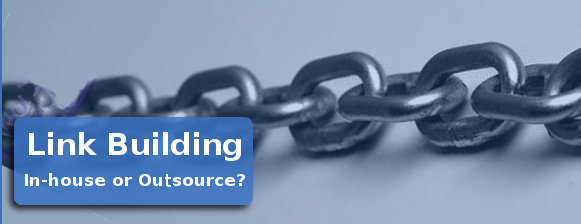
Search engine optimization (SEO) and link building are two of the most important things that determine the success of your website. You may wonder if you should work the SEO in house, or if you should outsource it from the start. There are a couple of situations in which you would be better off outsourcing from the get-go:
But for many website owners, doing SEO and link building in-house is a good first step. Sometimes it can be done perfectly well in-house, but if not, you can always hire an SEO expert if you need one. If you know the general ideas behind SEO and the importance of link building, there is a ton of free guidance online, much of it provided by Google, the search engine that much SEO is directed at.
Link building is one of those things that can’t be rushed too much. You don’t need loads and loads of links, but you need a few high quality back links that have no association whatsoever with spammers. Search engines do not take link spamming lightly. They will either demote your site in the rankings or kick it out of their indexes altogether and make you basically start over and prove to them that you’ve reformed your ways before letting you back in.
The sites that provide links to you give search engines context about your site’s content, and can give the search engine algorithm indications of its quality. The links have to be relevant, however. A link from a great website that has absolutely nothing to do with your site’s content won’t do you much, if any, good. Link exchanges and partnerships that are developed strictly for the sake of providing back links – relevant or not – dilute the quality of the links and violate Google’s webmaster guidelines. Your search engine rankings may drop drastically as a result of using these schemes. Links need to be obtained the old fashioned way: by earning them with good, unique content.
But while back links are important to your search engine ranking, they aren’t everything. After all, a brand new site may contain great, original content, but may not have had time to get any back links yet. If this is the case, there are many other things the site owner can do to boost search engine results while those back links develop organically.
Keywords are very important. If you are not sure which keywords you should use, then Google has a keyword tool that can help you. Suppose my website was about “green” energy products. That’s a hot topic these days, so keywords are going to be competitive. How can I choose the best keywords? As you can see in the first screen shot, I used the Google keyword tool to research the three keywords “windmill,” “green energy,” and “alternate energy.”
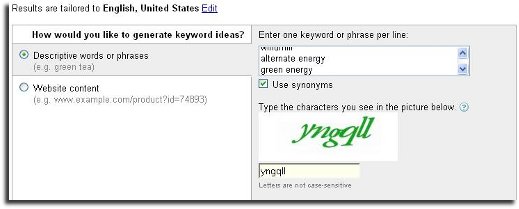
The second screen shot shows just part of a huge list of suggested keywords for my site. Now, if I choose keywords that have enormous monthly search volumes, I’m going to be competing with a lot of other sites, and with those keywords, I’ll probably inch my way up the search engine rankings at best.
The “sweet spot” I’m looking for is keywords that are relevant to my site that have search volumes in the tens of thousands rather than the hundreds of thousands per month. The keywords “windmill energy” and “windmill electricity” look promising. They come in at around 10,000 searches locally and globally, so I have a better chance of competing, and yet they’re keywords that are relevant and could eventually become competitive, hopefully after my site has worked its way to the top of the search engine rankings.
Another way to use the keyword tool is (looking at the first screen shot again) is with website content I like. I would search for a high ranking website about green energy and feed that site’s url to the keyword tool. The keyword tool will then use the content of that site to generate a list of keywords.
There are a number of other things you can do to get your SEO process going in-house. Submit a sitemap to the search engines so that their bots will be able to crawl your site easily. Make sure your site has an understandable hierarchy and that each page is reachable from one or more static links. Use relevant keywords in your image metatags. And ensure that your title elements and ALT attributes are descriptive and accurate. Fix or remove broken links. Make sure each page has a reasonable number of links. One hundred or more links are too many. Keep it down to 10 or 20.
These practices won’t take an inordinate amount of time, and Google has a lot of webmaster tools that show you exactly what to do to improve your site’s search engine rankings. If you try the basics and your site does not improve in the rankings, and you have fresh, original content, then it may be time to call in an expert on SEO. But in a lot of cases, if you approach it methodically you can do wonders for your site’s search engine rankings (and Google PageRanks) in-house. In fact, if you have summer interns, it would be a great project for one of them.